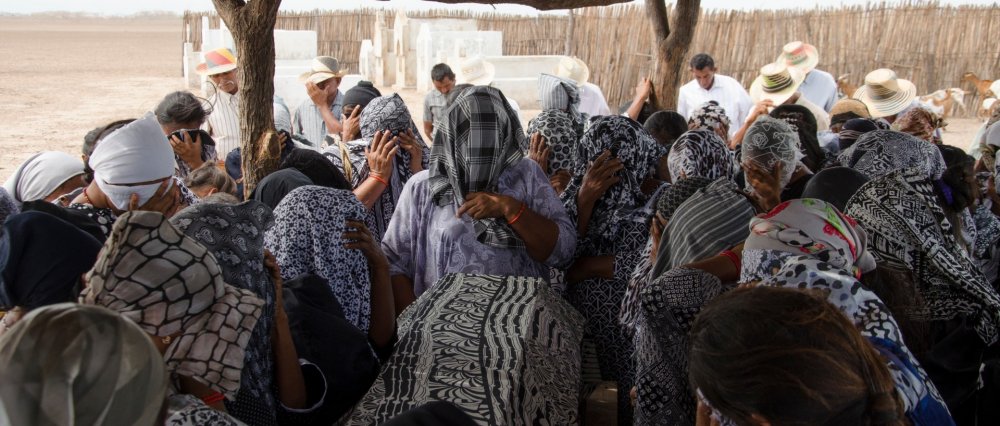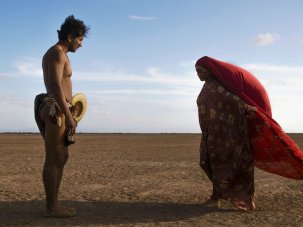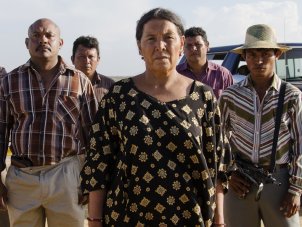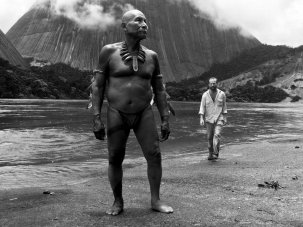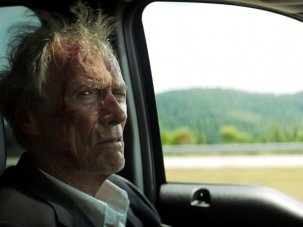Birds of Passage spans from the 1960s to the 80s, taking us on an epic journey to demonstrate how the drug trade changed the way of life across Columbia. The focus is on the Wayuu, an ethnic group of the Guajira peninsula in the northernmost part of Colombia. They are a traditional people with their own cultural systems, governed by a matriarchal head of the household who keeps the cultural norms thriving, but it’s a system that has been diminished by a seeping patriarchal influence in public spaces following the arrival of Spanish colonialists. In the 1960s, they were still a largely closed-off people, but that is changing as they begin trading with the rest of the population. In the film, the dynamics of the community begin to fracture as drugs become a commodity, and suddenly the moral compass of the community is sent spinning.
Birds of Passage is now in UK cinemas and on demand.
Unlike many stories about the Colombian drugs trade, which inevitably revolve around the legend of Pablo Escobar, directors Ciro Guerra and Cristina Gallego (a former husband-and-wife team who divorced during the production of the film) tell this tale from a local perspective, looking at how the indigenous population is affected by greed and growing levels of violence. But the filmmakers turn this on its head by asking: is it the drugs trade or capitalism that is the culprit?
The directors add to this complexity by refusing to tell the story of drug dealers as the story of innocent victims against violent oppressors, especially when greed is the motivation of all. This focus on the power dynamics of a community is reminiscent of the award-winning Embrace of the Serpent, which Guerra directed and Gallega produced in 2015. It’s a drug tale told in a poetic voice, making use of traditional storytelling techniques to highlight contradictions rather than provide an action-fuelled high.
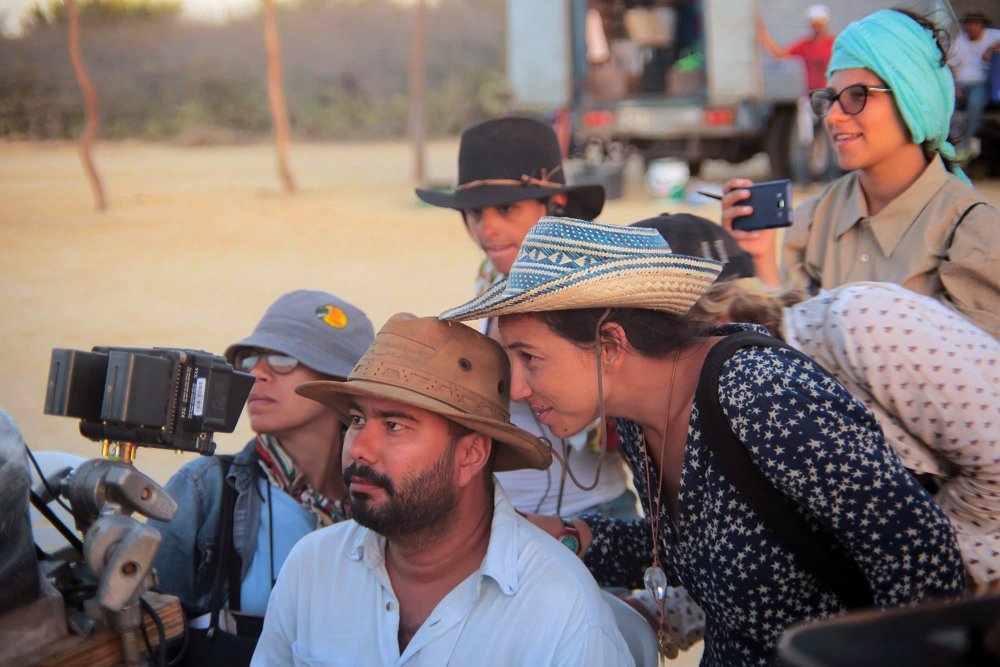
Ciro Guerra and Cristina Gallego on the set of Birds of Passage
At the start of Birds of Passage, the Columbia on screen seems very naïve and controlled. Why was it important to go back to this state?
Cristina Gallego: In the beginning is the family. That is where things start to grow. The important thing is the change in this culture – from the traditional culture to a violent culture, through all of the things that were going to happen. But also, because of start of the drug business in Colombia, which was done in a very naïve way. In the film, the motivation for the character is to start a family, and to do that he has to make more money.
Ciro Guerra: The world was definitely a more naïve place in many ways; for most of the people involved there was no cynicism when approaching this kind of risky business. And what we wanted to portray was a very naïve time in which you were smuggling liquor or coffee, and then you switched to marijuana. It was seen as the same, especially as it was just like a normal weed grown in the earth. Even the drugs were more naïve! These days through the use of hydroponic cultivation and plantations, people are trying to make marijuana more addictive and more toxic than it has ever been. And it can really trigger, in people who smoke it, all kinds of strange paranoia and mental health issues.
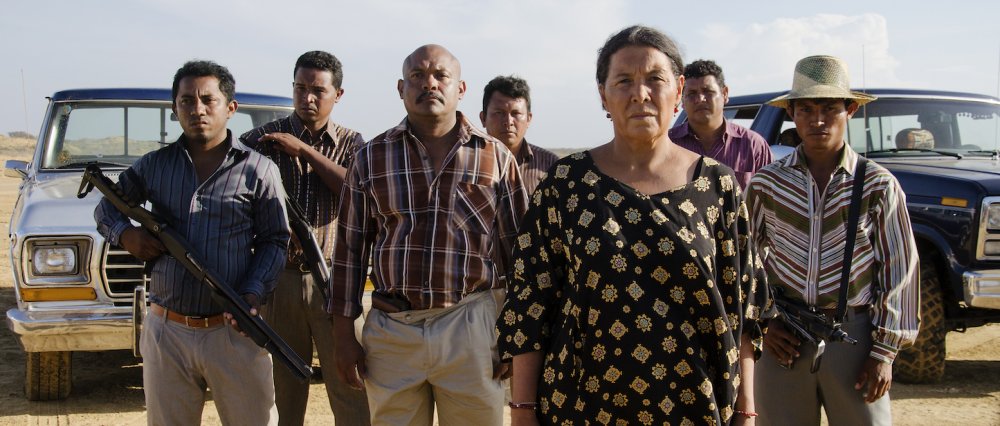
And why did you choose the Wayuu people to essay?
Ciro: For us, Wayuu culture is a microcosm. You can see the effect that capitalism has, in its most pure and savage form, and the Wayuu experience it in a short period of time, in a very close community. But I think the film deals with the world at large.
Cristina: For us the important thing was to show how the drug trade and capitalism affects our culture; how we can see this as a tragedy. We take elements from genre cinema, from Greek tragedy, but also the real, and the magical realist world of García Márquez, and we try to combine all of these elements to create this film.
There also seems to be a massive element of Sergio Leone, and you even include a kind-of Mexican stand-off between the tribes.
Ciro: There was a western element of it because of the setting. Both David Gallego, the cinematographer, and I are fans of Sergio Leone. And we looked to his spaghetti westerns as inspirations and to how he manages to film between very wide shots and close-ups. He balanced the epic and the intimate.
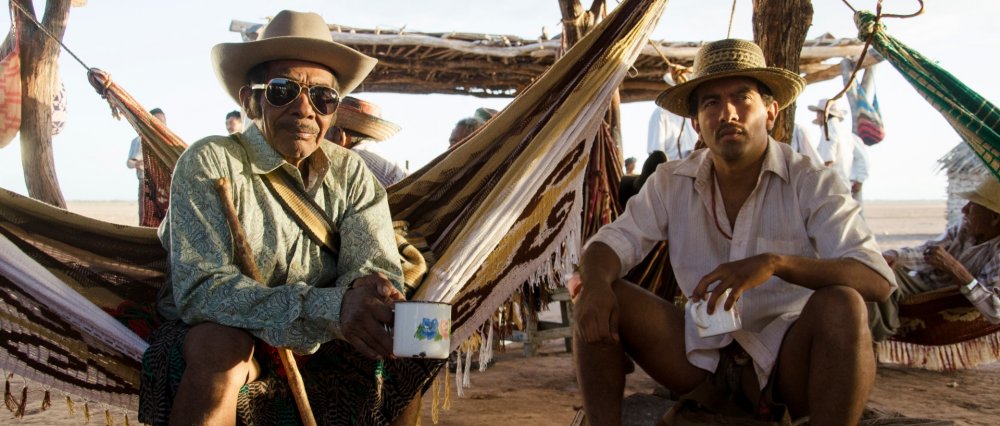
Were there any reservations about doing yet another film set in Colombia about the drugs trade? I know that in Colombia that there is a kickback that Pablo Escobar remains the most famous person in the country?
Ciro: We had the same reservations against this type of film, because I think it’s unethical to make a film about a person like Pablo Escobar and try to have him look like a hero. And a lot of films of the genre end up glorifying these criminals and their culture. And I think that’s something that, as Colombians, people in Colombia really hate because we have experienced how tragic this process has been.
So, in order to make a film that is true, we have to tell it from our perspective. Because these films about Escobar and about the drug trafficking war are usually made by American filmmakers or foreign filmmakers, and that’s a foreigner’s view.
So what makes the native view different?
Ciro: We flip the story on its head, we flip the genre on its head. We are making a film with very strong female characters. The films in the genre have been very masculine and we are telling it from an indigenous perspective that has never been seen in this genre. This is a genre that definitely needs to be reinvented and needs to be put into a different perspective. And we need to show our perspective as Colombians that this was really a tragedy and it was the destruction of our society and a corruption of our moral basis. And this story of how the Wayuu people experience it in a very short period of time, provided us with a microcosm of how that worked.
Cristina: We can talk about this thing in Colombia where we are the protagonists of this big problem. And so, at the start, we knew that we have to be very careful and very loyal to our point of view? To tell how this affected us as a society. This film was not made to tell a tragedy of a family.
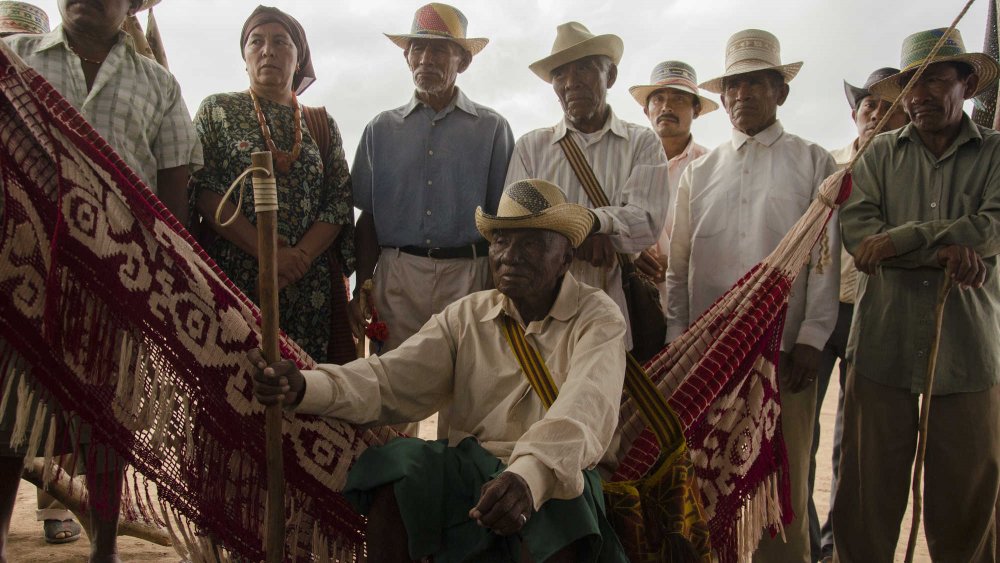
You start with a pubescent girl being kept in confinement so that she can be married off. The film is also critical of this traditional culture?
Ciro: This aspect is very intense because even the traditional Wayuu community becomes a very capitalistic community, no? And they trade everything, with everything, even humans. And this human is hidden to increase her value.
Cristina: The only person that can come stay with her are the grandmother and the mother and they teach her how to be a woman. And for as long as she’s in confinement, the higher the prize the family can put on her. We see how this society looks to this woman as a product.
This is also related to how we are seen in the community. The man goes out and is the hunter while the woman is stuck in the cave taking care of the kids. It’s a place to be safe. But this also creates in us women a fear, a fear to be in public, to speak in public, to expose ourselves in public. And this is something that is related to society, not just in this place. But what we found fascinating is how these things are dialogue with the world.
In Embrace of the Serpent the colours were monochrome, whereas here they are so vibrant, especially in the dream sequence: the dress is so colourful. How did you choose this palette?
Ciro: Those are the colours of the Wayuu people. And we wanted the film to be very authentic and to stay very true to who they are. And it’s a culture in which colour has a very big significance; every colour means something. There’s a different colour for war, for revenge and the duel, and for mourning. So it’s a very colourful society, and the iconography and their textile and their craft is very colourful. So that was something that we wanted to remain true to, and of course it’s tremendously beautiful.
We also took their iconography and used it to our advantage. Like the birds, for example: they are very important in the Wayuu myth and historically and in mythology in general. We took the Jayeechi song as our inspiration for the structure of the film, because it’s how they tell stories.
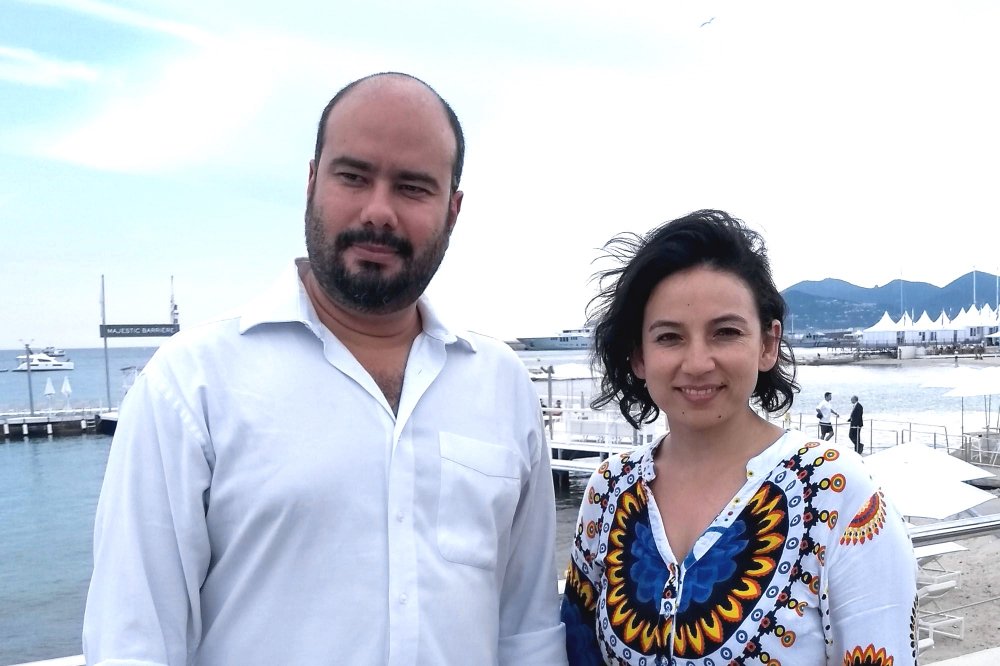
Ciro Guerra and Cristina Gallego at Cannes
How did you work together as filmmakers? Who does what?
Ciro: We’ve had a long collaboration. We’ve done four films together and Cristina was always the producer on the previous films. But for this particular film, it was very close to her, it was very important to her, the story was coming from her. And we also wanted to give this twist of it being a female protagonist and having a female point of view.
It felt like a natural transition. We’ve been working together for so long and we know each other very well, so we know how to complement each other. Basically, we make all the decisions and all the creative ideas come from us, and when it comes to the point of executing, we both have areas in which…
Cristina: One is stronger. In this Ciro was more involved on the technical side, with the storyboards, and I was closer to the actors, with their intentions and motivations. In the editing room, Ciro was more involved in the edit and I in the sound.
Ciro: But every decision comes from both of us, and then we execute it according to both our visions.
-
The Digital Edition and Archive quick link
Log in here to your digital edition and archive subscription, take a look at the packages on offer and buy a subscription.




